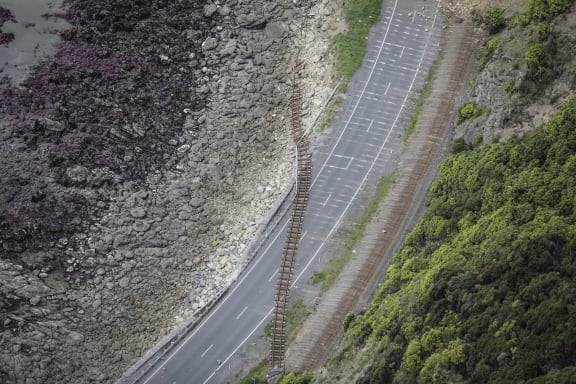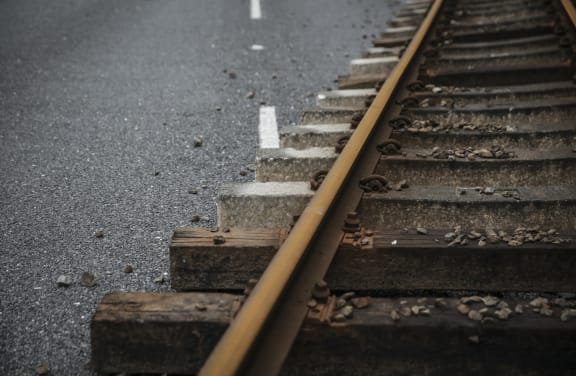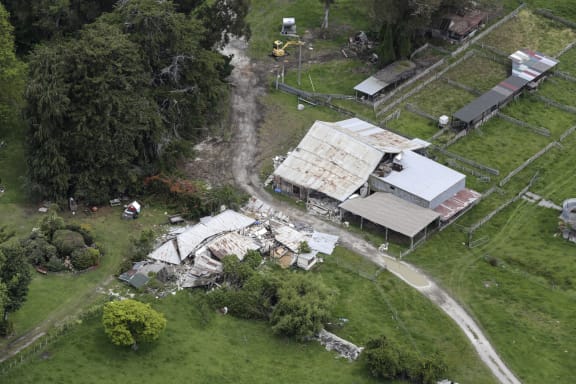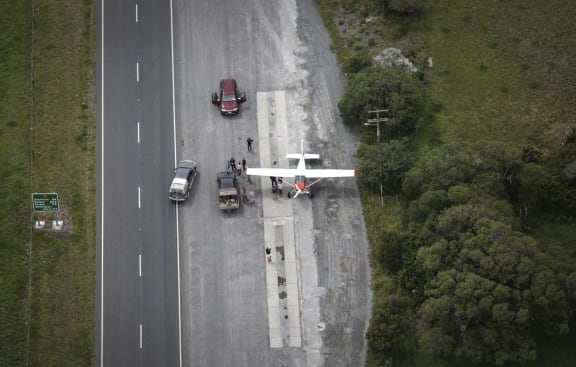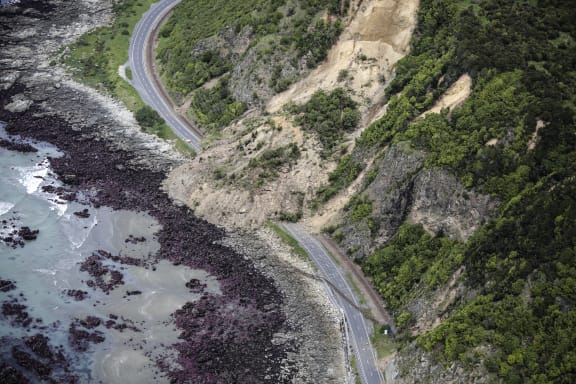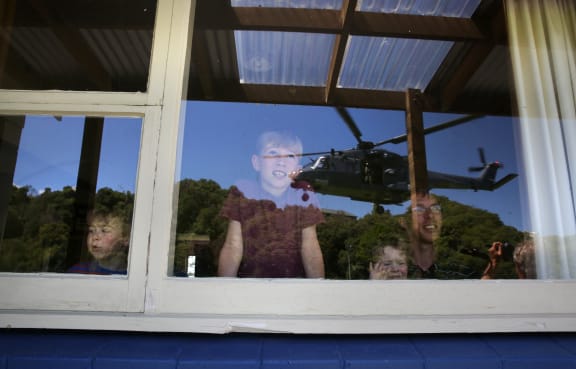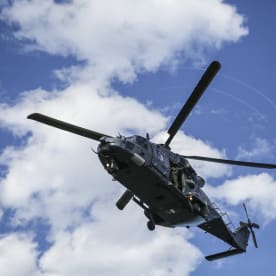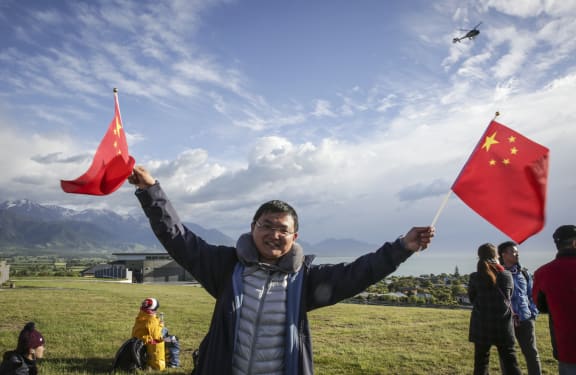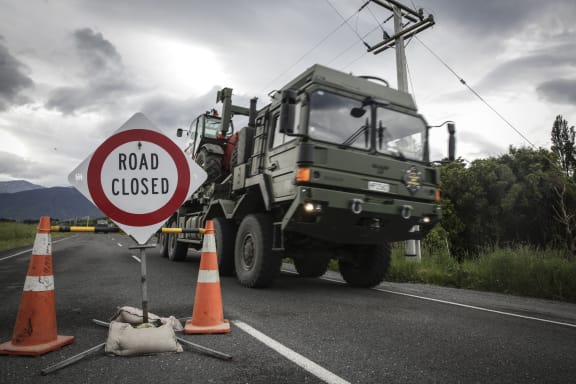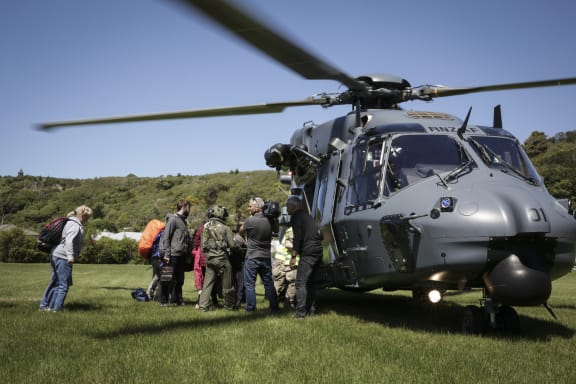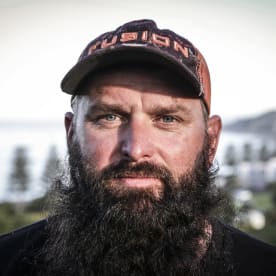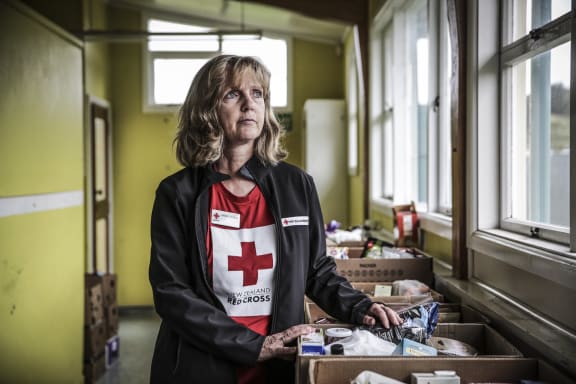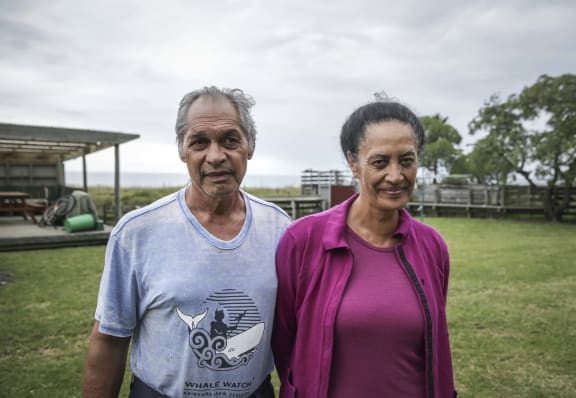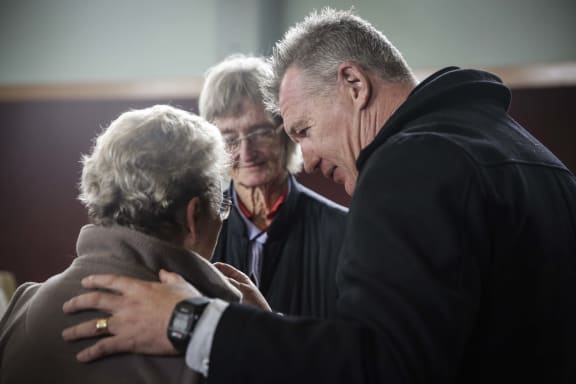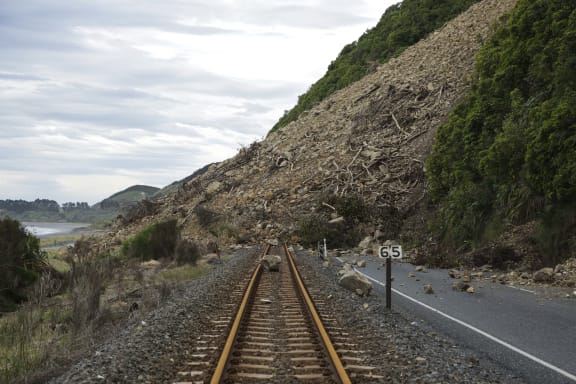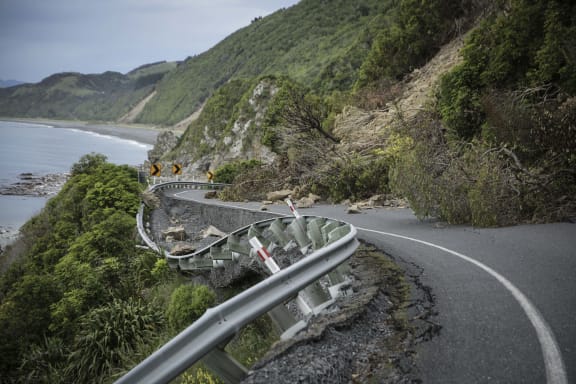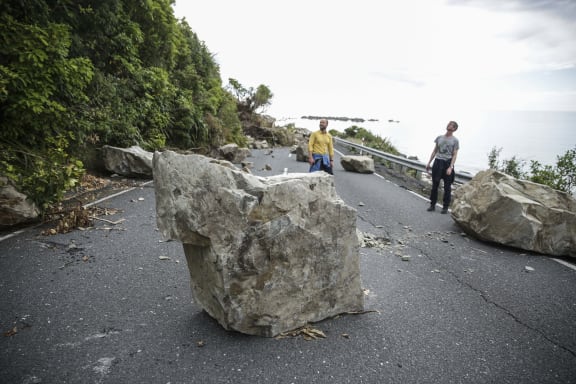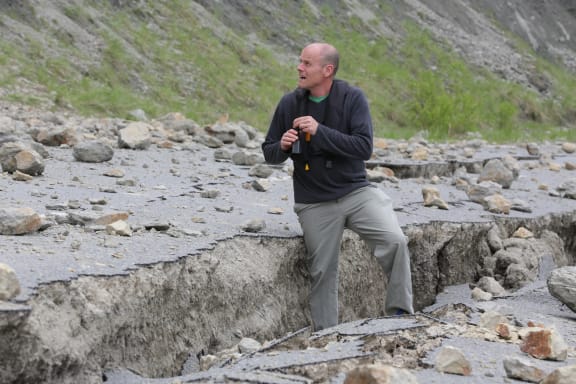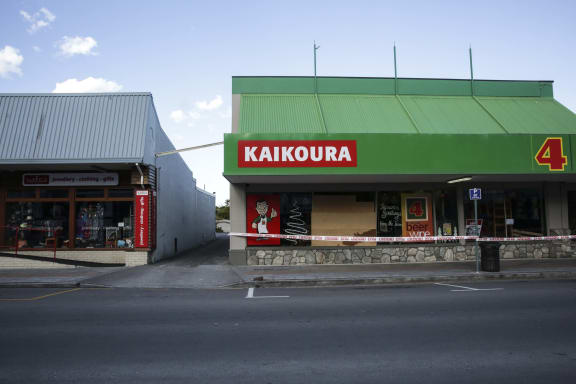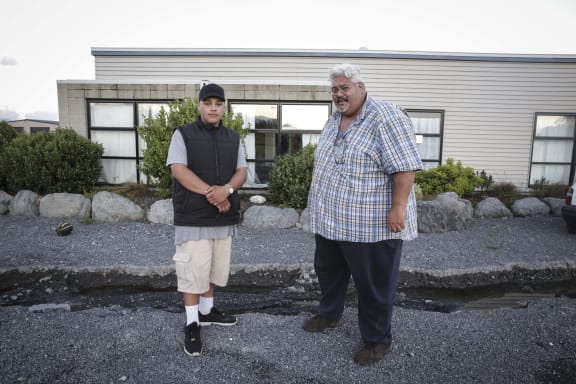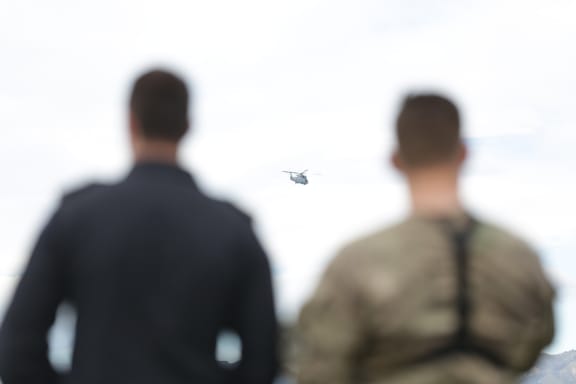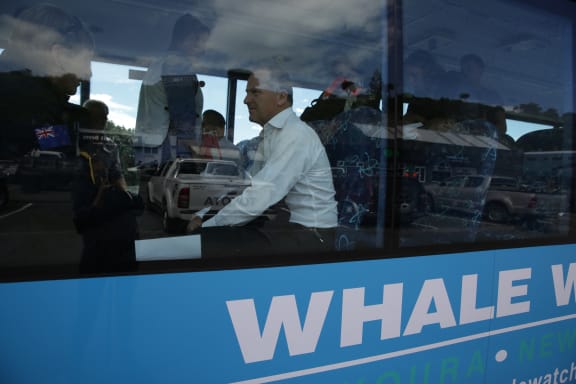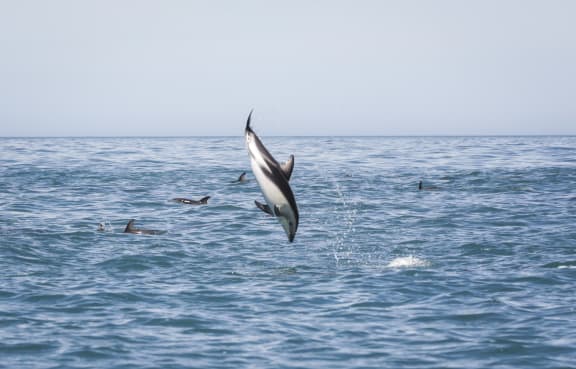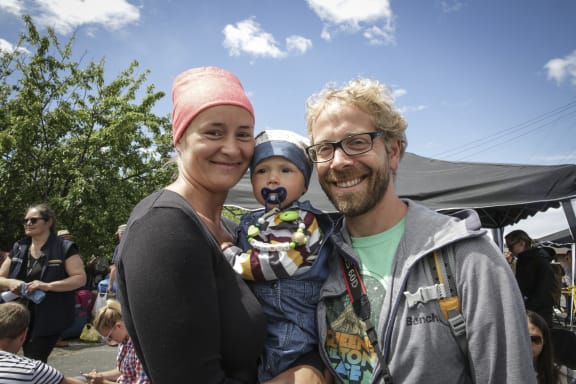After being rocked awake by the massive 7.8 earthquake that hit North Canterbury last November, RNZ reporter Phil Pennington was among the first reporters to be sent to Kaikoura to assess the damage.
His new book Surviving 7.8 is a detailed account of how the disaster unfolded.
Pennington says it had been hard to see the scale of damage as they first arrived but after seeing a large break in the highway near Clarence, the damage multiplied from there on.
"From there on it was 'there's another slip, and another'."
Pennington says Kaikoura was a picture postcard when he landed, as there was no one around.
"We knew the [Elm] Homestead had been flattened but there was nothing else we could see.
"We land on the ground at about quarter past 12 and we need to get onto Midday Report."
He says they couldn't see anyone at the airport, but thankfully a logger, Bob Dronfield - who had been on his way to Amberleigh, where his home is - gave the RNZ team (Pennington, Rebekah Parsons-King, and Tim Graham) a lift, and subsequently lent them his ute to travel around the quake-hit area.
"Bob was really the reason that RNZ got the coverage that we did… I don't know how we would've got around."
Pennington says while there were incidents of theft following the quake, the acts of people pitching in and helping outweighed those 1000 times over.
That included the efforts of Takahanga marae to accommodate and feed hundreds of tourists in the quake's aftermath.
Major Timms and his son Jason were among those who went above and beyond to help out, he says.
"This is on the Monday night, they've been up 24 hours, they've served 700 people."
Prior to the quakes Kaikoura had been looking to 1 million visitors a year.
Pennington says in the days after the quake, the impact of the damage began to hit.
"The epitome of it was the four big whale watch boats and they were on their keels because the seabed had raised up.
"Just talking to people, this week in fact, saying it is quiet and they're trying to make it work."
He says residents of Waiau still feel like they've been forgotten.
"They say we really haven't had any attention. They're making a go of it themselves and they're sticking with it, but it's where resilience meets long-term bounce back."
During his time reporting, Pennington says he had no access to internet and no way of knowing what other outlets were saying.
He says when ABC phoned him asking to do a live cross they said they wanted to talk about the group of cows that became stranded when their paddock crumbled around them in the quake.
"And I said what cows? So I ended up hearing from the Australians about the famous cows."
Pennington says the book is not just his own experiences of the earthquake, but a collection of accounts from various RNZ reporters.
"In some ways I think it's more like quilting - they gave me these beautiful patches of work and I quilted it all together."
Proceeds from sales of Surviving 7.8 go to the New Zealand Red Cross Kaikoura Earthquake 2016 appeal.
